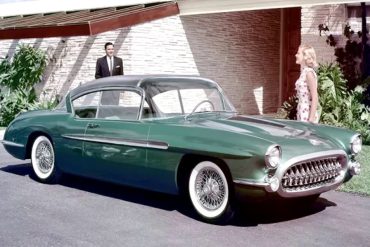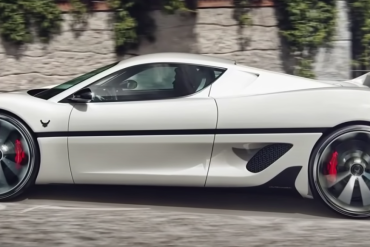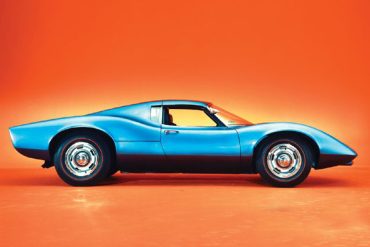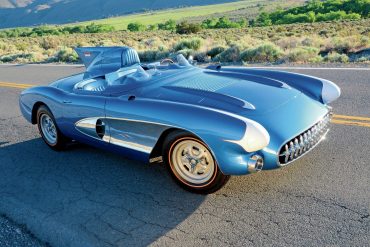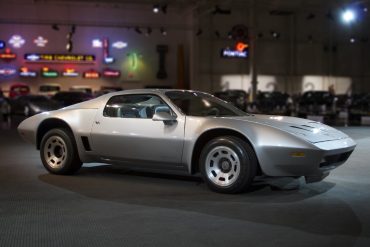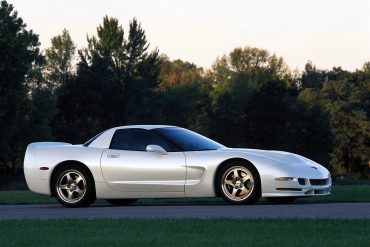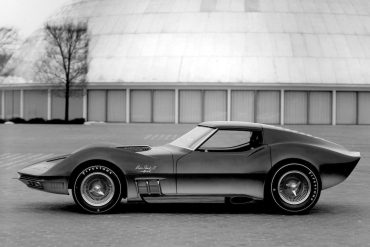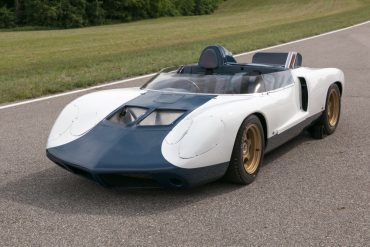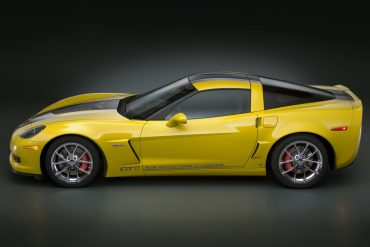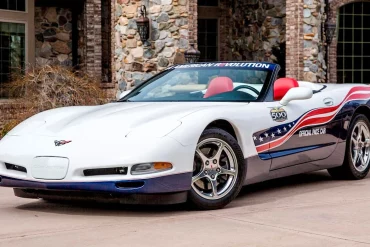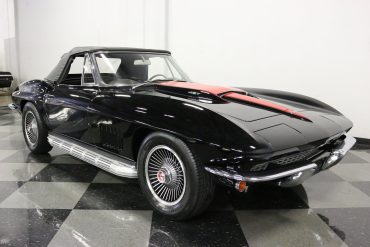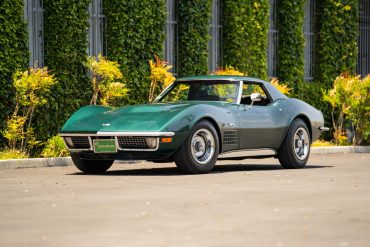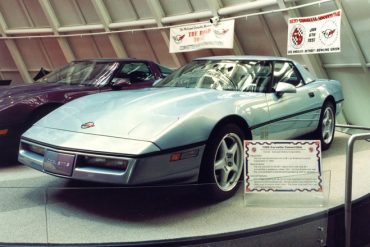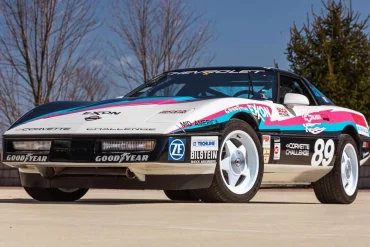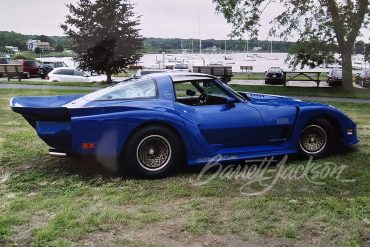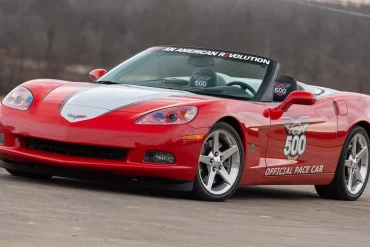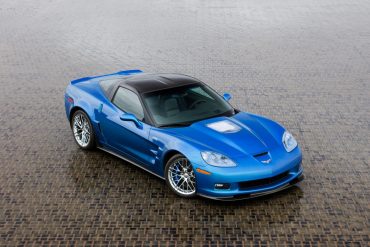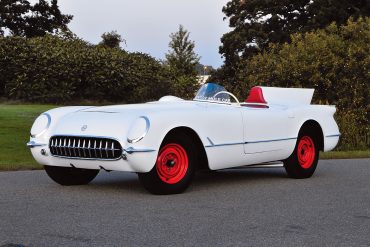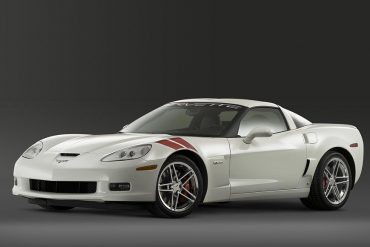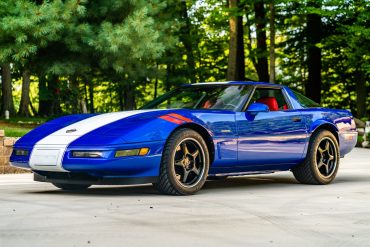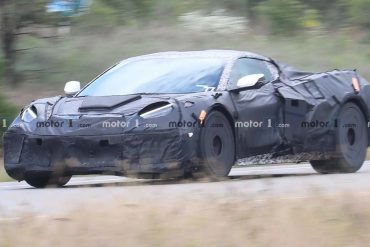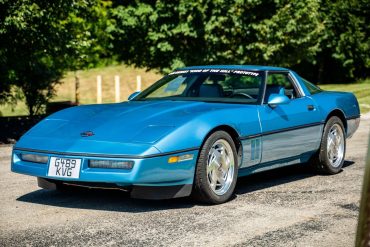On July of 1955, the Chevrolet design studio staff created a dream car for the 1956 GM Motorama shows, called Corvette Impala. The Corvette grille and grille surround are incorporated, as well as other Corvette components. This hardtop five-passenger sports sedan shows the name "Corvette Impala" on the front emblem and rear license plate.
Sure we are only four years into the eighth-generation Corvette, but that doesn’t stop enthusiasts from talking and dreaming about...
The Astro II was one of the most significant case studies of Duntov’s outright refusal to let his mid-engine dreams die, and as such, ultimately entered the history books as a precursor to the eventual mid-engine, C8 Corvettes of today. The Astro II was designed in a way that was more representative of the Corvette’s typical styling cues, than that of The Astro I.
Designed mid-1956 for Harlet Earl’s son Jerry, the SR-2 was put into racing duty in 1957. The car debuted at Daytona Beach in 1957 with a high-speed canopy, fender skirts and bullet-shaped frond headlights. Driven by Betty Skelton and Buck Baker, the car won the modified class with an average speed of 93.074 mph. The SR-2 also finished second in class for the flying mile with a top speed of 152.886 mph.
The XP-895 was one in a series of experimental Corvettes built to explore alternative engine placements and chassis layouts. This vehicle features an 400 cid small block V8 mounted transversely in a mid-engine position. It utilizes a Turbo Hydramatic transmission via a bevel gear box. The body panels are all aluminum.
"Hot" is an apt description of this special coupe's drivetrain. Its 6.6-liter engine produces 512 horsepower and 523 lbs.-ft. of torque. Mated to a four-speed automatic transmission and featuring a 3:41 geared limited slip differential and four-wheel independent suspension, this "Vette takes a backseat to no other vehicle. The White Shark Corvette also features power rack-and-pinion steering to precisely pilot this vehicle and four-wheel disc brakes with ABS.
The Mako Shark II was a radical concept that shaped Stingray years later. While showcasing distinct design cues, the Mako Shark contained many notable features for 1965. It had a one-piece front-end that hinged forward for access to the engine bay, a removable hardtop, knock-off aluminum wheels and a big-block 427. Chevrolet received overwhelming requests to have it produced.
The CERV II was entirely Zora’s car. The CERV II was conceived early in 1962 and developed over the next year, after the GS program was squashed. The car was built under Zora's direction between 1963-'64. Zora had it in mind to develop a separate line of racing Corvettes but the idea got terminated by management.
Chevrolet introduced the limited production Corvette GT1 Championship Edition at Sebring International Raceway. The GT1 Championship Edition (Regular Production Option GT1) commemorates the success of Corvette Racing and the Corvette C6R:
Corvette performed Indianapolis 500 Pace Car duties for a record sixth time. It marks the third consecutive year and 15th time overall that a Chevrolet product has served as the Official Pace Car – the most appearances by any brand. The 2004 Corvette that will serve as the Indy 500 Pace Car is virtually identical to the Convertibles available today through local Chevrolet dealerships.
The L71 was Chevrolet’s most powerful engine in 1967 which replaced the big-block L71 from the previous year. Using it’s famous ‘Tri Power’ intake manifold was rated by the factory at 435 bhp. Costing $437.10, 3,754 Corvettes were made with the L71 options and they could not come with automatic transmissions nor air conditioning.
The 1971 ZR2 Corvette stands as a remarkable feat of engineering, even exceeding the legendary L88 in rarity. Creature comforts...
There were several successful attempts to build a convertible ZR-1, most of them by private people. The DR-1 was a GM prototype to test the structural integrity of the ZR-1 chassis when it would be topless. The car was built by American Sunroof Corporation (ASC) for Don Runkle, who was the vice-president of Advanced Engineering Staff, which explains the “DR-1” designation. It was a standard convertible transformed to ZR-1 specs.
The 1989 Corvette Challenge cars had a unique option code from the factory, it was "R7F". The documentation from GM clearly indicates that the cars were produced for the express purpose of racing in the SCCA Corvette Challenge Series. There is also documentation that identifies by serial number, all Corvettes produced with these option codes. Therefore, it is relatively easy to validate the authenticity of any Challenge car.
If you happened to see this 1981 Greenwood Daytona Turbo out in the wild, at first glance, you might shrug...
The 2005 Corvette Pace Car paced at the 89th Annual Indianapolis 500 on May 29, 2005. It was driven by Retired Army General and former Secretary of State Colin Powell. There were three Pace Cars produced. Eight Track/Festival convertibles painted Victory Red Corvette were used on race day. These Track/Festival Pace Cars did not have the center silver stripe, logo-embroidered headrest, and graphics that were on the actual pace car. There were two replica pace cars produced.
The ZR-1 returned with the 1990 Corvette lineup after an eighteen year hiatus. This time, it featured a special LT5 engine that had been developed by Lotus (which, at the time, had been a subsidiary of General Motors.) The LT5 engine featured an all-aluminum block, four overhead camshafts, and 32 valves. It also featured an air management system which enabled the car to maintain proper operation while closing off half of its fuel injection system.
Built for outright top speed, this prototype Corvette was built by Zora Duntov. He successfully piloted the car to a two-way average speed of 150 mph in January of 1956 at Daytona. Later two more similar cars were built for the 1956 Daytona Speed Weeks in February. After initial resistance from Engineering, Duntov’s cam was delivered to the Proving Ground.
The Ron Fellows ALMS GT1 Champion Edition Corvette was introduced as part of the 2007 Corvette line-up. To commemorate Mr. Fellows long and successful career with the Corvette Racing program, Chevrolet introduced the Ron Fellows Championship Edition Z06 Corvette as part of their 2007 model line-up. It was released as a commemorative model to celebrate one of GM's winning-est drivers, but did little to impress enthusiasts or collectors when first introduced.
Priced at an additional $3250 for the coupe or an additional $2880 for the convertible, the Grand Sport package included exclusive Admiral Blue paint and featured a single white stripe that ran the length of the body as well as two red accent stripes (also known as “Sebring Stripes”) on the driver side front fender. This unique paint scheme was deliberately developed by GM to pay homage to the classic Corvette Grand Sport Racer of the 1960’s.
As reported by Motor1, right on the heels of the announcement that the Corvette C8 Hybrid is coming as early...
This 1988 Chevrolet Corvette holds significance in the Corvette community as one of two remaining factory “King of the Hill”...
No More Content


